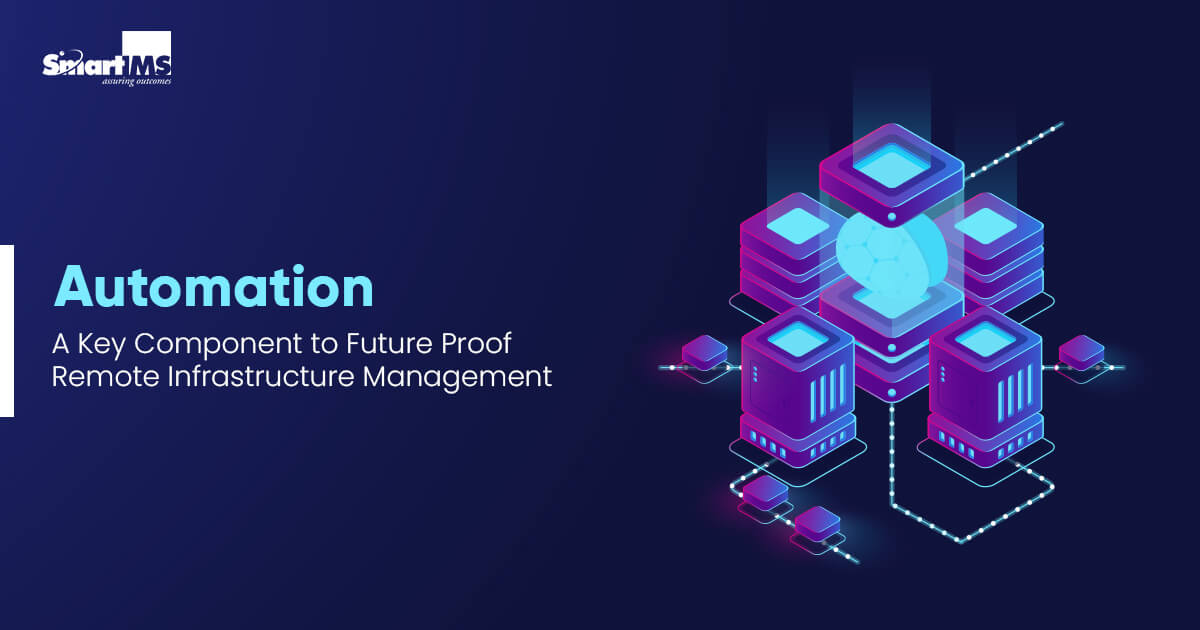Since the onset of the ‘Tech Age’, businesses have seen major evolutionary changes every decade. From the development of a personal computer to the invention of the world wide web, industries have had to constantly adapt to remain relevant. With each technological advancement, companies have faced a multitude of challenges to navigate through and the era of ‘cloud’ is no exception. Dispersed data centers, hybrid cloud, work from anywhere and ever-increasing cyber threats present complex challenges to today’s businesses, demanding agility and efficiency.
What is the solution to these problems? Automation.
Before we talk more about why Automation is the answer, let us see how relevant this solution has become based on current business standards.
As per a report published by Gartner, 90% of global organizations are expected to employ cloud-first strategy by 2025, while IDC estimates that infrastructure automation market to reach a staggering $38.5 billion by 2026. These numbers reveal a clear shift towards automation, as manual management continues to remain unsustainable, outdated and inefficient.
Why Embrace Automation?
As technology evolves, so do business needs and to remain relevant within the growing global market, sustainable tech solutions are the key. So, how would automation remain sustainable in the future?
Automation isn’t static; it’s an ever-evolving landscape with upcoming trends that can potentially push global industries to the next level. For example:
- AI-powered Automation: Machine learning algorithms are increasingly used for intelligent decision-making in automation tasks.
- Infrastructure as Code (IaC): Defining infrastructure configurations as code allows for consistent, repeatable deployments and easy management.
- Hybrid and Multi-Cloud Automation: Tools are emerging to manage complex hybrid and multi-cloud environments seamlessly.
- Security Automation: Automated threat detection and incident response are becoming crucial for proactive security posture.
- Continuous Integration and Continuous Delivery (CI/CD): Automating the DevOps pipeline streamlines software development and deployment.
Automation can also aid in enhancing efficiency by:
- Freeing IT teams from solving trivial tasks.
- Increase scalability with advanced workload adaptability.
- Fortifying security to minimize vulnerabilities.
- Improving cost management to reduce operational expenses.
- Empowering data driven decision-making with predictive analytics.
How can you implement Automation successfully?
While the potential is vast, navigating the implementation can be daunting. Here’s a roadmap to success:
- Assess your needs: Clearly define your automation goals and identify areas with the highest impact.
- Evaluate tools and solutions: Choose tools that integrate with your existing infrastructure and offer flexibility.
- Start small and scale: Begin with automating simpler tasks and gradually expand as you gain expertise.
- Develop a governance framework: Establish clear guidelines and control mechanisms for responsible automation.
- Invest in training and upskilling: Empower your team to understand and operate your automation tools effectively.
The Future is Automation:
Automation is not just a fancy trend; it’s the future of smart IT infrastructure management. By working with a Remote Infrastructure Management partner and implementing automation strategically, you can ensure that your IT infrastructure remains manageable, secure, and future proof. To know more about how automation can help your business, connect with our experts today!



